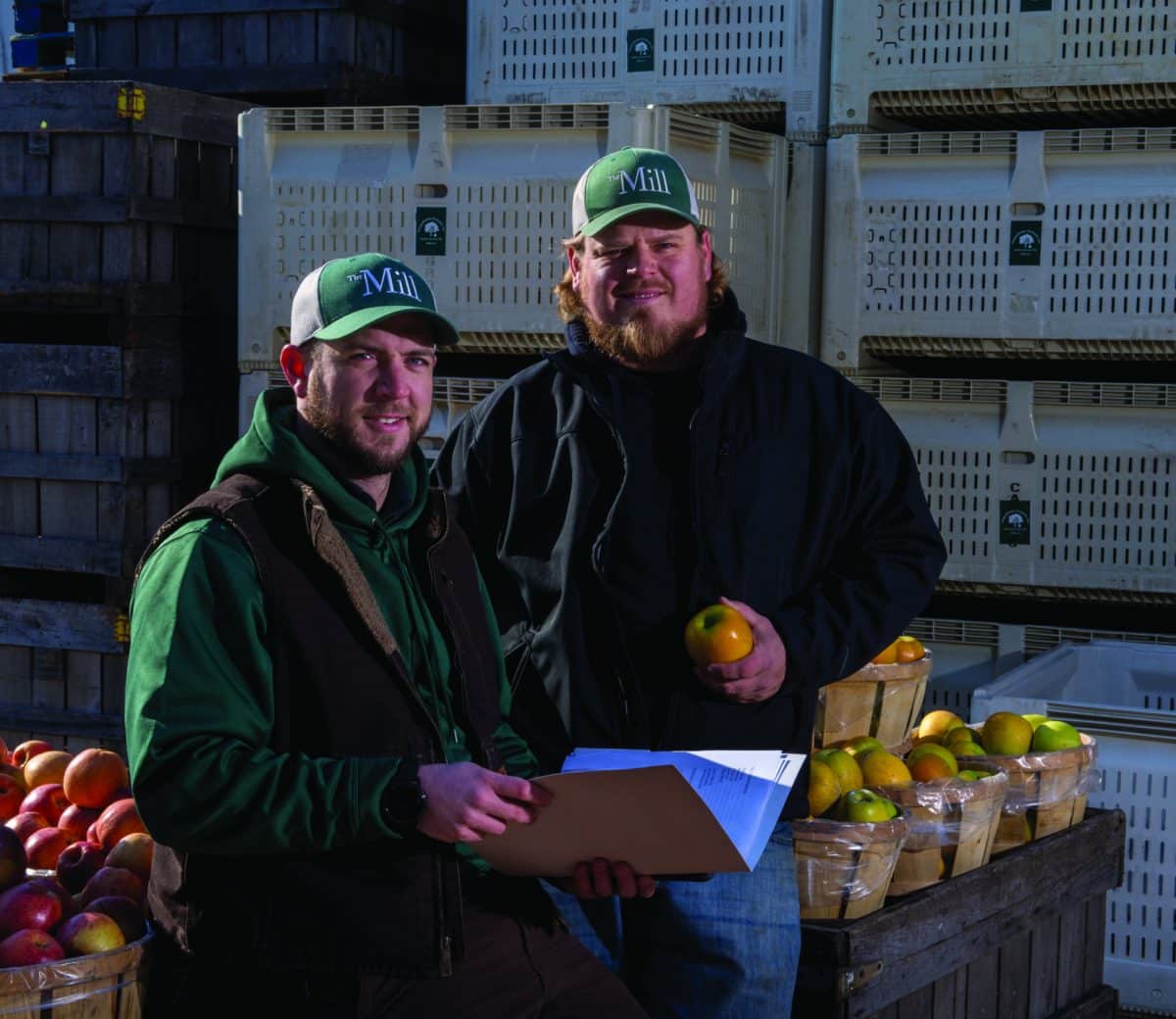Susquehanna Orchards originated in the 1920s as a fruit farm. A retail store was added in the 1940s and it is still successful today, selling apples, peaches, and pumpkins grown on the 315- acre farm that now includes corn and soybeans. It is located in Delta, Penn., just four miles from the head of the Chesapeake Bay. Mike Kurek and his wife, Trish, own and manage the farm that has conservation in its DNA.
The fifth-generation farmer learned a lot from his grandparents but recognized that incorporating new technologies would create opportunities for the business.
Kurek started incorporating the 4R Nutrient Stewardship practices on his 75 acres of peaches, 35 acres of apples, and 35 acres of pumpkins. He developed a spoon-feeding foliar fertilizer application system specifically for the orchards. Regular tissue sampling allows him to determine nutrient needs, and he applies 100 percent of nutrients via foliar application.
“There aren’t many 4R programs specifically for orchards, so I developed my own,” Kurek says. He leans on Pennsylvania State University Extension experts, other farmers, and 4R practices developed for other crops to create his 4R management plan for the orchards.
In 2011, Kurek resumed control of 230 acres of leased corn and soybean fields and began applying 4R principles to them in 2012. He and Tim Hushon, sustain ag tech manager at ag retailer, The Mill in Red Lion, Penn., incorporated Veris and Dualem mapping and zone soil sampling. He began using the Adapt-N nitrogen model in 2016 to develop more field-specific nitrogen recommendations for each management zone.
A liquid nutrient application goes in the furrow at planting. He split applies nitrogen in corn at 40 percent burndown. Then, and using the nitrogen model along with weather factors, determines the remaining amount of urea treated with a nitrogen stabilizer and AMS that are needed. He also incorporates a foliar application of fertilizer at the second herbicide action in corn. Corn yields have increased from about 160 bushels per acre to 200 to 220 bushels per acre.
Kurek observed an $8.00 per acre savings in 2018 by applying phosphorous and potassium with a variable-rate application. His 2019 nitrogen use efficiency for corn ranged from 0.82 to 1.04 pound per bushel, compared to the 1.0 to 1.2 pound per bushel he observed a few years ago. Kurek still uses dry fertilizer on soybeans to build fertility and makes three applications of foliar nutrients. Ideally, this will feed the plants and lessen the amount of phosphorous and potassium that needs spreading.
Best Practice Management
- Use nitrogen stabilizer for liquid and dry fertilizers
- Use urease inhibitor
- Use nitrification inhibitor
- Use phosphate efficiency enhancement additives
- Zone soil sampling
- Variable-rate nutrient application
- Account for nutrient credits from the past year to determine rate
- Account for nutrient credit from cover crops to determine nutrient application rate
- Use split application for nutrients
- Use Adapt-N in-season nitrogen management tool
- In-season plant tissue testing
- Foliar application
- GPS precision planting
- GPS precision nutrient application
- Satellite imaging to help identify yield potential and nutrient management plans
